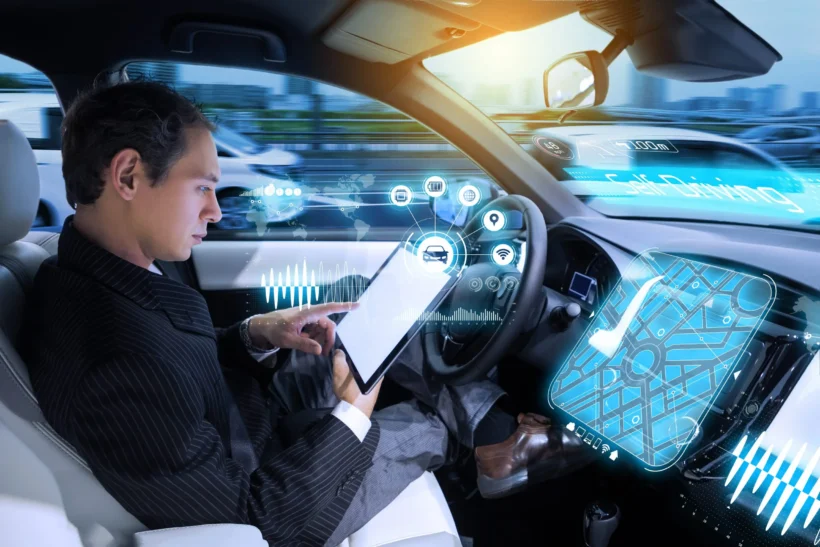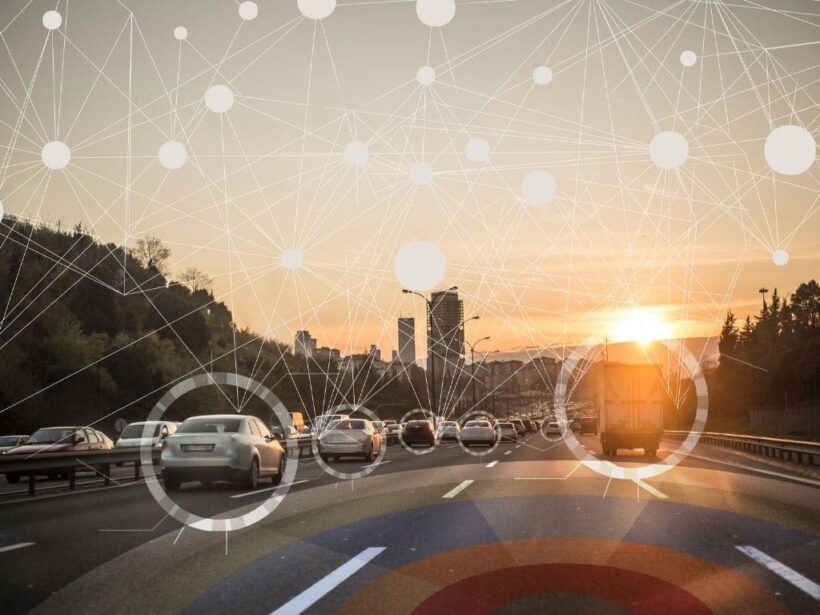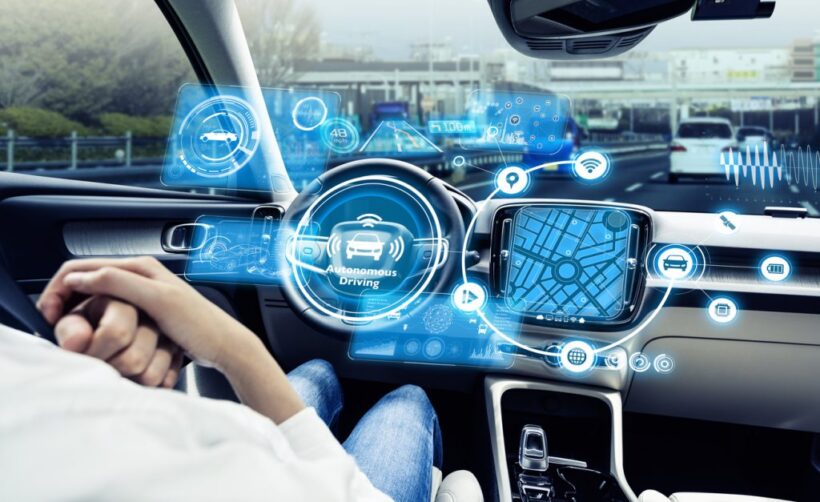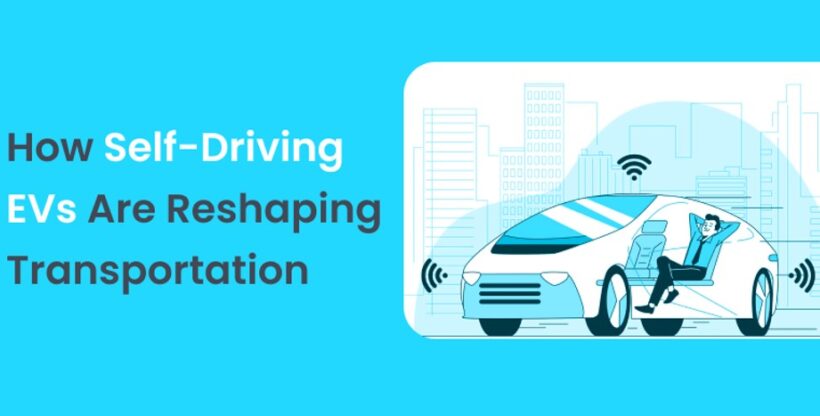The fusion of electric vehicles (EVs) with autonomous driving technology has set the stage for a transformative revolution in the world of transportation. Driverless Electric Vehicles are not just a novel concept but a promising reality that has the potential to reshape the way we move and interact with our vehicles.
Enrolling in the Best Electric Vehicle Course equips individuals with the knowledge and skills to actively contribute to the development and deployment of self-driving EVs, fostering their role in reshaping transportation.
In this comprehensive blog, we will delve into the impact of self-driving EVs, exploring the technology behind them, their benefits, and the challenges they face.
Understanding Self-Driving EVs

Driverless electric vehicles, also known as autonomous electric vehicles, are cars that have the capability to navigate and operate without human intervention. They utilize a combination of advanced sensors, cameras, radar, and artificial intelligence (AI) to perceive their surroundings, make real-time decisions, and safely navigate roads. This autonomous technology enables the vehicle to control steering, acceleration, and braking, providing a seamless driving experience.
Levels of Autonomy
The Society of Automotive Engineers (SAE) has defined levels of autonomy, ranging from Level 0 (no automation) to Level 5 (full automation). Driverless EVs fall within Levels 3 to 5, which represent high levels of automation. At these levels, the vehicle can take over control in specific situations and handle complex driving tasks without human intervention.
The Impact of Self-Driving EVs
Self-driving EVs are making waves in the transportation industry for a variety of reasons:
- Enhanced Safety
Safety is a paramount concern in the transportation sector, and driverless electric vehicles have the potential to reduce accidents significantly. Human error is a leading cause of traffic accidents, and autonomous vehicles can make real-time decisions to avoid collisions, making roads safer for everyone.
- Reduced Traffic Congestion
Self-driving electric vehicles can communicate with each other and traffic management systems to optimize traffic flow. This communication minimizes traffic congestion, resulting in faster and more efficient commutes.
- Accessibility
Self-driving electric vehicles can be a game-changer for individuals with mobility challenges, such as the elderly and disabled. These vehicles provide an accessible mode of transportation for people who may not have been able to drive before.
- Environmental Benefits
Combining electric propulsion with driverless technology offers double benefits for the environment. Robotic electric vehicles are zero-emission vehicles, reducing greenhouse gas emissions and air pollution.
- Efficiency
Autonomous vehicles can maximize fuel efficiency and energy use. They accelerate and brake more smoothly, reducing energy waste and extending the range of electric vehicles.
Challenges and Hurdles
While the potential benefits of robotic EVs are vast, the technology faces several challenges and hurdles:
- Technical Complexity
Developing robotic technology is highly complex, requiring advanced hardware and software. Ensuring the system’s safety and reliability is a significant challenge.
- Legal and Regulatory Framework
Self-driving EVs need to navigate a complex web of regulations and legal issues. Policymakers are working to create a standardized legal framework that addresses safety, liability, and certification for autonomous vehicles.
- Cybersecurity
The increasing reliance on software and connectivity makes self-driving EVs vulnerable to cyberattacks. Ensuring robust cybersecurity measures is essential to protect these vehicles from potential threats.
- Public Perception
Acceptance of robotic EVs by the general public remains a hurdle. Some individuals are hesitant to trust autonomous technology, fearing a loss of control or safety risks.
- Ethical Dilemmas
Autonomous vehicles may face moral dilemmas when making split-second decisions. For example, they might need to choose between protecting the vehicle’s occupants and avoiding harm to pedestrians. Resolving these ethical dilemmas is a challenging task.
Benefits of Self-Driving EVs

- Improved Road Safety: Self-driving electric vehicles have the potential to reduce accidents caused by human errors. Their advanced sensor systems and quick decision-making capabilities can help prevent collisions and save lives.
- Reduced Traffic Congestion: Autonomous vehicles can communicate with one another and traffic management systems, optimizing traffic flow. This results in reduced congestion, shorter commutes, and lower fuel consumption.
- Enhanced Accessibility: Self-driving electric vehiles offer a valuable mode of transportation for individuals with mobility limitations, providing newfound freedom and independence.
- Environmental Benefits: Combining electric power with autonomous technology reduces greenhouse gas emissions and air pollution, contributing to a cleaner and more sustainable environment.
- Efficiency and Energy Savings: Self-driving EVs can drive more efficiently, making smoother acceleration and braking decisions. This results in energy savings and extended driving ranges.
Challenges and Concerns
- Technical Complexity: Developing driverless technology involves complex hardware and software, requiring extensive testing and safety measures.
- Legal and Regulatory Hurdles: Self-driving EVs must navigate a complex legal landscape, including regulations, liability, and certification.
- Cybersecurity Risks: With increasing connectivity, robotic EVs face potential cybersecurity threats. Ensuring robust protection against cyberattacks is vital.
- Public Perception: Widespread acceptance of autonomous vehicles remains a challenge, as some people are skeptical about placing trust in robotic technology.
- Ethical Dilemmas: Self-driving electric vehicles may encounter moral quandaries when making instant decisions that could involve prioritizing vehicle occupants over pedestrians, raising ethical concerns.
Current State of Self-Driving EVs
Several companies, including Tesla, Google’s Waymo, and General Motors’ Cruise, have made significant strides in developing and testing robotic technology. While fully autonomous vehicles have yet to achieve mass adoption, partially autonomous features, like adaptive cruise control and lane-keeping assistance, are already available in many vehicles on the market.
Governments and regulatory bodies are also working to create a legal framework to accommodate robotic electric vehicles. As the technology evolves, policymakers are addressing issues related to safety, liability, and certification, ensuring the safe integration of autonomous vehicles into existing traffic environments.
The Road Ahead
The journey of robotic EVs is undoubtedly exciting, but there is still much work to be done. Autonomous technology must continue to evolve, ensuring safety, reliability, and acceptance by the public.
Future advancements in self-driving EVs include:
- Expanded Applications: Self-driving technology will extend beyond personal vehicles to commercial transport, including autonomous taxis, buses, and delivery services.
- Enhanced Connectivity: Vehicles will become more connected, communicating with each other and traffic management systems for improved traffic flow.
- Sustainability: Self-driving electric vehicles will further contribute to environmental sustainability by reducing emissions and increasing energy efficiency.
- Inclusive Mobility: The technology will continue to improve accessibility, making transportation more inclusive for individuals with disabilities and the elderly.
- Global Integration: The technology will be integrated on a global scale, transforming transportation networks and creating a more connected and efficient world.
Conclusion

Self-driving electric vehicles represent a groundbreaking intersection of technology and transportation, offering a promising future of improved safety, reduced congestion, accessibility, and environmental benefits. Despite the challenges, the journey toward mass adoption of self-driving EVs continues to accelerate. As technology evolves and becomes more widely accepted, we can anticipate a transportation landscape that is safer, more efficient, and more sustainable, ultimately changing the way we move and experience the world.

